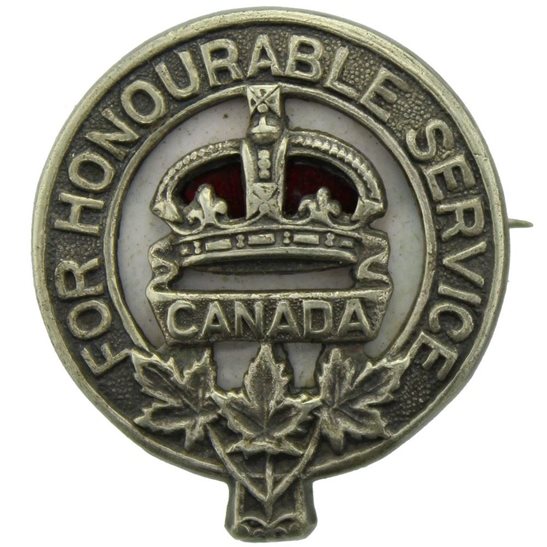Personal Details
Born: 26 October 1893 in Whitchurch, Shropshire and baptised on 22 November 1893 at St. Alkmund`s Parish Church, Whitchurch.
Family: He was one of nine surviving children born to William Crewe, a labourer and his wife Ann, nee Keefe. He married Maud Eveline Mellor in 1918 in Whitchurch, Shropshire. The couple had two children, Eileen Anna and Frederick Arthur.
Residence: At the time of his baptism in 1893 his family were living in Newtown, Whitchurch. On both the 1901 and 1911 Census their address was Oddfellows Cottages (Terrace), Whitchurch. He appears to have emigrated to Canada in 1911. In 1921 he and his wife were living at 836 Swan Street, Nanaimo, Victoria, British Columbia, Canada. Victoria seems to have been his home for the remainder of his life.
Employment: On the 1911 Census he was described as a newsboy. His occupation upon his Attestation in 1915 was given as a chauffeur. After leaving the Army in 1919 until he retired he was a waiter.
Died: 1 March 1960 in Victoria, British Columbia and buried in Hatley Memorial Gardens, Colwood, Victoria, aged 66.
Military Details
Regiment: Canadian Expeditionary Force (61st Battalion)
Rank: Private
Service Number: 461219
Date of Enlistment: 10 November 1915
Date of Discharge: 28 March 1919
Reason for Discharge: Demobilisation
Other Information: He sustained a gunshot wound to his head and hand whilst fighting in France. His brothers, George, Harry and Thomas and his uncle Charles also served in the Canadian Expeditionary Force during WW1.
Arthur was awarded the Campaign medals (Victory and British War Medals) and the Canadian War Service Badge (number 130272)

The British War Medal (also known as 'Squeak') was a silver or bronze medal awarded to officers and men of the British and Imperial Forces who either entered a theatre of war or entered service overseas between 5th August 1914 and 11th November 1918 inclusive. This was later extended to services in Russia, Siberia and some other areas in 1919 and 1920. Approximately 6.5 million British War Medals were issued. Approximately 6.4 million of these were the silver versions of this medal. Around 110,000 of a bronze version were issued mainly to Chinese, Maltese and Indian Labour Corps. The front (obv or obverse) of the medal depicts the head of George V. The recipient's service number, rank, name and unit was impressed on the rim.
The Allied Victory Medal (also known as 'Wilfred') was issued by each of the allies. It was decided that each of the allies should each issue their own bronze victory medal with a similar design, similar equivalent wording and identical ribbon. The British medal was designed by W. McMillan. The front depicts a winged classical figure representing victory. Approximately 5.7 million victory medals were issued. Interestingly, eligibility for this medal was more restrictive and not everyone who received the British War Medal ('Squeak') also received the Victory Medal ('Wilfred'). However, in general, all recipients of 'Wilfred' also received 'Squeak' and all recipients of The 1914 Star or The 1914/1915 Star (also known as 'Pip') also received both 'Squeak' and 'Wilfred'. The recipient's service number, rank, name and unit was impressed on the rim.

The Canadian War Badge was awarded to members of the Canadian Expeditionary Force (CEF) who served in the United Kingdom or at the front, and who, due to old age, wounds or sickness, had retired or relinquished their commissions or been honourably discharged.


I have a picture of Arthur Crewe in uniform. Please let me know where I can send it.
Hi Carolyn
Please send the picture to info@whitchurch-heritage.co.uk and we will add it to the Great War web site. Thank you for offering it to us
Best wishes
Terry Fry; Volunteer, Whitchurch Museum & Archives